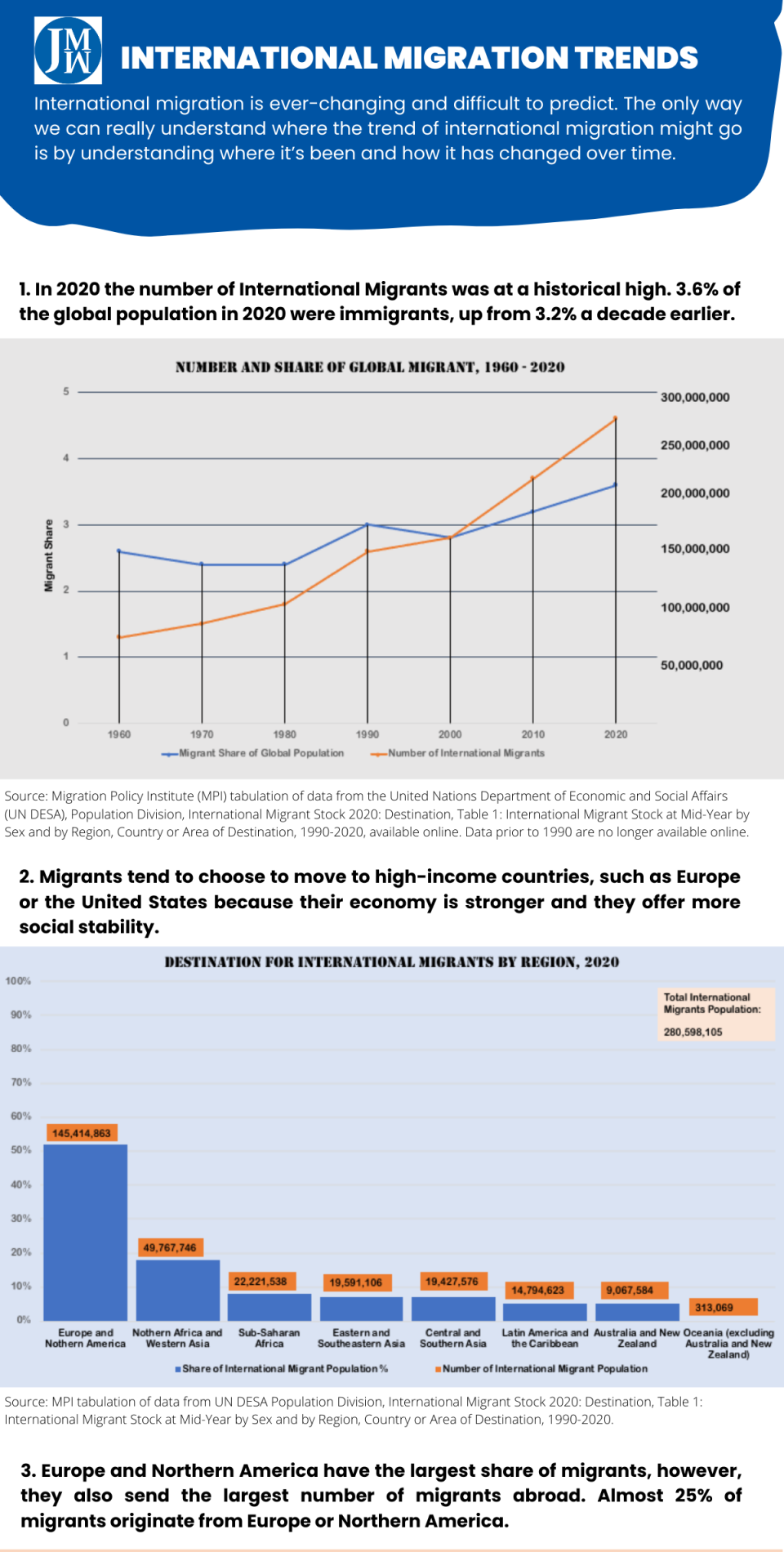In 2020, the number of migrants had quadrupled since 1960, with 3.6% of the world’s population living outside of their country of origin. In just the last decade, nearly 60 million people have become migrants. There are numerous reasons for this, including labour and family migration. This graph shows that the number of migrants is increasing year on year and there is no evidence to suggest that is going to change any time soon.
Migrants don’t necessarily go to one country in particular, however, most migrants do tend to move to high-income countries. They hope to benefit from the social stability and the stronger economy that the country has to offer. As you can see from the table, more than half of migrants will move to Europe or Northern America. Almost 20% of the remainder will choose to live in Northern Africa or Western Asia. And as you can see, no migrants chose to live in Oceania, excluding Australia and New Zealand which do attract a small 3% of migrants.
In terms of individual countries, the US has the highest percentage of migrants standing at 18%. In 2020, the US had over 50.6 million migrants. The next four countries on the list are Germany, Saudi Arabia, Russia and the UK, collectively these four countries still have fewer migrants than the US, with a combined total of 50.2 million. Since 1990, the UK, Australia, Spain and the United Arab Emirates have made it into the top ten destinations, which could mean we the number of migrants in these countries increase.
(Click on the Image For Full View)


